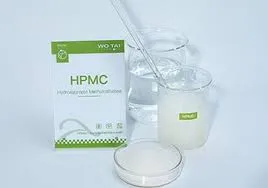
Sep . 28, 2024 05:31 Back to list
Exploring the Viscosity Properties of HPMC Grades for Various Applications
Understanding HPMC Grades and Their Viscosity
Hydroxypropyl Methylcellulose (HPMC) is a widely used hydrophilic polymer in various industries, including pharmaceuticals, food, cosmetics, and construction. Its diverse applications stem from its unique properties, such as thickening, stabilizing, and emulsifying capabilities. One of the key characteristics of HPMC that practitioners must understand is its viscosity, which varies significantly among different grades. This article delves into HPMC grades and the importance of viscosity in enhancing its functional applications.
What is HPMC?
HPMC is a semi-synthetic polymer derived from cellulose, which undergoes etherification to achieve the desired hydroxypropyl and methyl substitutions. These modifications enhance its solubility in water and its thermal stability. HPMC is available in various grades, differentiated primarily by their viscosity and the degree of substitution, making it suitable for a range of applications.
The Significance of Viscosity
Viscosity is a measure of a fluid's resistance to flow. In the context of HPMC, viscosity is critical as it determines the thickening capability of the solution, which influences the texture and performance of end products. High viscosity HPMC grades are often used in applications where a thicker consistency is needed, such as in gel formulations or suspensions, while low viscosity grades may be preferred for applications requiring a more fluid consistency.
Different HPMC Grades
HPMC grades are typically categorized based on their viscosity levels, which are measured at specific concentrations and temperatures. The viscosity of HPMC can vary widely, from low viscosity (around 50-200 mPa.s) to high viscosity (over 100,000 mPa.s).
1. Low Viscosity HPMC (LV) These grades are characterized by lower molecular weight and are often used in applications where a thin, easily spreadable texture is required. Common uses include non-sticky coatings, emulsions, and light sauces.
hpmc grades viscosity

2. Medium Viscosity HPMC (MV) Mid-range viscosity grades find usage in a variety of applications, offering a balance between flowability and thickness. They are commonly utilized in pharmaceutical formulations, including tablet coatings, controlled-release dosage forms, and personal care products.
3. High Viscosity HPMC (HV) High viscosity grades are employed in applications needing significant thickening. They are ideal for formulating gel-like substances, such as ointments, pastes, and heavy sauces. Additionally, HV HPMC acts as a stabilizer, providing improved texture and shelf stability.
Factors Affecting Viscosity
Several factors influence the viscosity of HPMC solutions, including temperature, concentration, and the degree of substitution. As temperature increases, viscosity tends to decrease due to the reduction in intermolecular interactions. Higher concentrations of HPMC will result in increased viscosity, as more polymer chains create a denser network of hydrophilic groups interacting with water. The degree of hydroxypropyl and methyl substitutions can also impact viscosity; higher substitutions generally lead to increased water solubility and variation in viscosity.
Applications of HPMC Based on Viscosity
The choice of HPMC grade based on viscosity has critical implications in product formulation. In the pharmaceutical industry, selecting the appropriate viscosity grade ensures the desired release profile of drugs in topical, oral, or injectable formulations. In the food industry, viscosity influences mouthfeel and texture, contributing significantly to the overall sensory experience. In construction, HPMC acts as a thickener, improving the workability of mortars and plasters.
Conclusion
Understanding the various grades of HPMC and their corresponding viscosities is vital for professionals across multiple sectors. By selecting the appropriate grade based on viscosity, formulators can significantly enhance product performance, ensuring that they meet functional requirements while also satisfying consumer expectations. Hence, a comprehensive knowledge of HPMC grades not only facilitates the development of effective products but also fosters innovation across industries.
-
The Widespread Application of Redispersible Powder in Construction and Building Materials
NewsMay.16,2025
-
The Widespread Application of Hpmc in the Detergent Industry
NewsMay.16,2025
-
The Main Applications of Hydroxyethyl Cellulose in Paints and Coatings
NewsMay.16,2025
-
Mortar Bonding Agent: the Key to Enhancing the Adhesion Between New and Old Mortar Layers and Between Mortar and Different Substrates
NewsMay.16,2025
-
HPMC: Application as a thickener and excipient
NewsMay.16,2025
-
Hec Cellulose Cellulose: Multi functional dispersants and high-efficiency thickeners
NewsMay.16,2025







